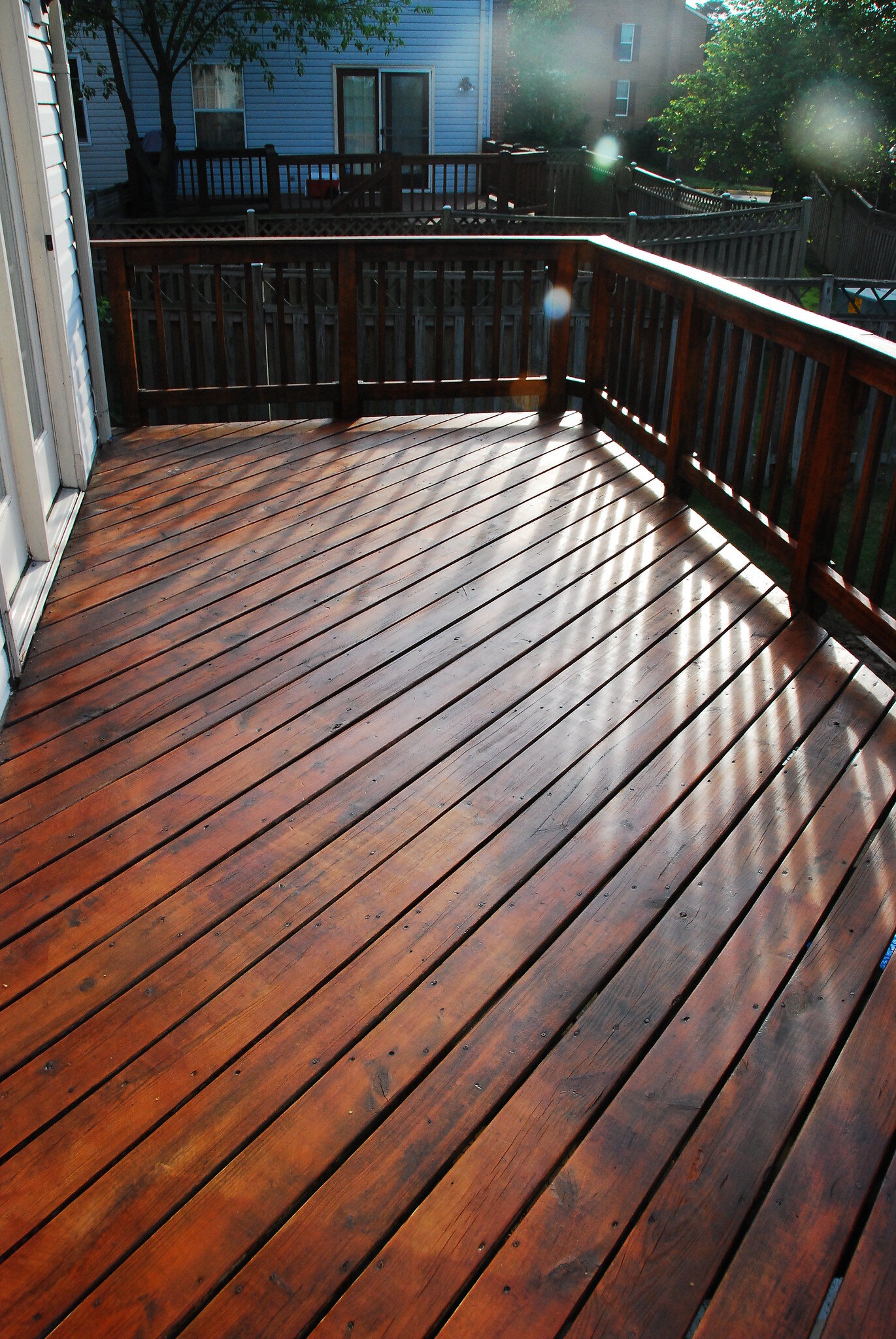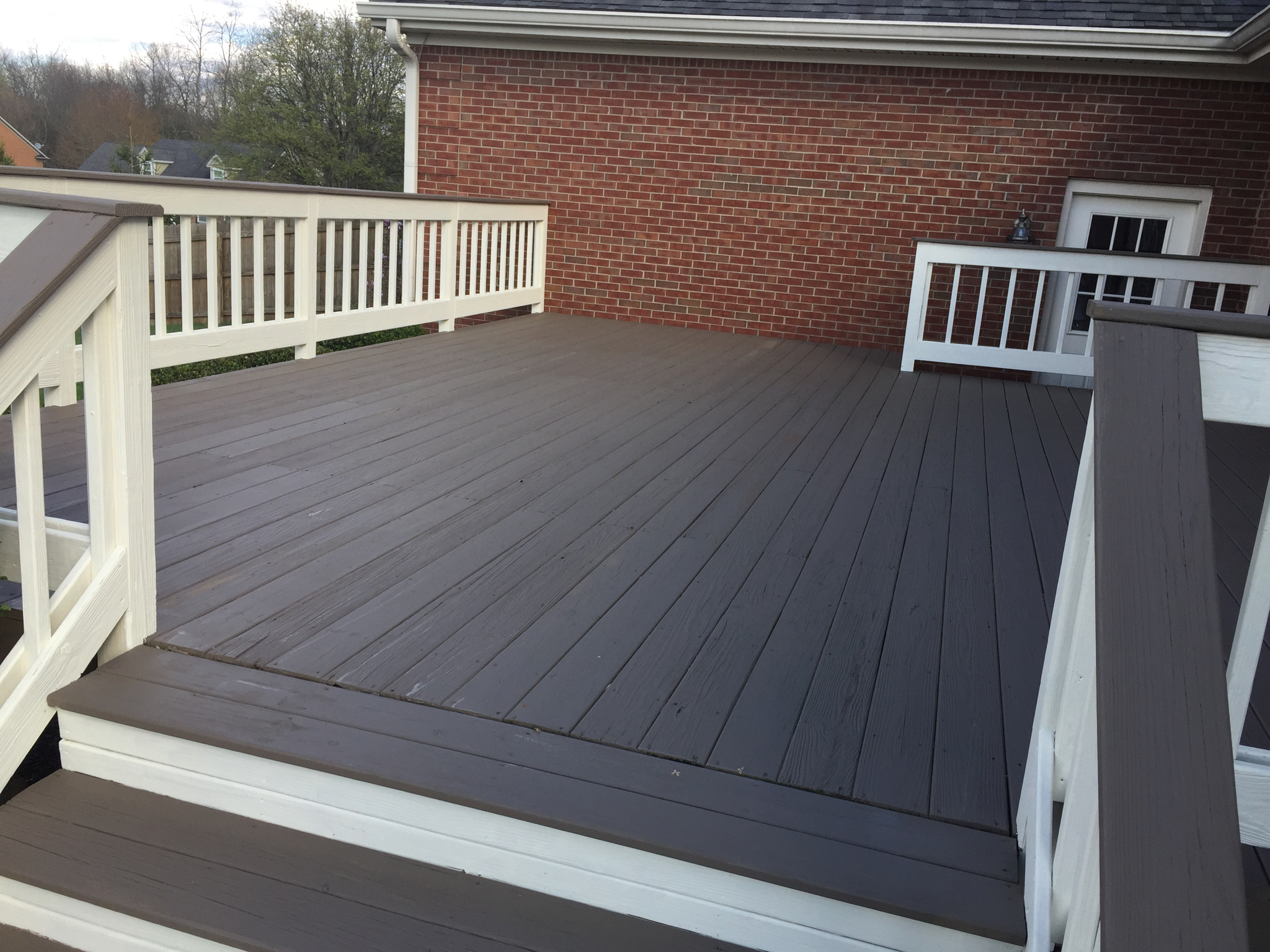Beautiful Deck Designs: The Impact of the Right Stain Choice
Beautiful Deck Designs: The Impact of the Right Stain Choice
Blog Article
A Comprehensive Overview to Various Sorts Of Deck Staining Techniques for Ultimate Defense and Visual Appeals
In the realm of deck maintenance, the art of tarnishing stands as an essential step in the direction of both maintaining the stability of your exterior area and enhancing its aesthetic charm. As we navigate through the detailed world of deck discoloration strategies, one begins to appreciate the nuanced strategies that can make all the difference in between an average finish and a remarkable one.
Comprehending Various Kinds of Stains
Numerous kinds of spots are commonly made use of in the process of deck discoloration to achieve various visual and protective results. Transparent discolorations are optimal for showcasing the all-natural grain of the wood while giving very little defense against UV rays and dampness. On the other hand, semi-transparent spots offer a balance in between color enhancement and defense, allowing some timber grain to show with. For an extra opaque surface that gives maximum defense against the components, solid discolorations are the favored selection. These stains are available in a broad array of shades and efficiently hide the wood grain.
Toners add a hint of color to the timber while giving marginal defense, making them appropriate for newer decks with less wear. Understanding the characteristics and advantages of each kind of discolor is important for accomplishing the desired appearance and longevity for your deck.
Picking the Right Spot Color
When taking into consideration the aesthetic appeals of your deck staining project, the selection of discolor color plays an essential role in boosting the safety high qualities of the selected tarnish type (Chicago Deck Staining). The color you choose can significantly influence the general look of your deck, along with its capability to endure the components gradually
When selecting a tarnish color, it's necessary to take into consideration the existing color design of your home's outside. Harmonizing the deck tarnish with the general visual of your building can produce a visually enticing and natural outdoor area. In addition, the shade of your deck stain can influence the temperature of the deck surface; darker colors tend to soak up more warm, while lighter colors show sunlight and stay cooler.
In addition, the type of timber you are staining will also impact just how the stain color shows up. Various wood types can connect with the stain in different means, possibly altering the final shade. It's suggested to evaluate the discolor on a tiny, inconspicuous area of the deck to make sure the shade transforms out as desired before continuing with the whole task.
Preparing Your Deck for Discoloration
To guarantee a successful and resilient deck staining project, complete prep work of the deck surface area is essential. Begin by cleaning the deck completely to eliminate dirt, gunk, mold, and any type of old tarnish or end up. Make use of a deck cleaner or a mixture of water and detergent along with a stiff brush or pressure washing machine to scrub the surface area tidy. After cleansing, permit the deck to completely dry entirely prior to carrying on to the following step.
Evaluate the deck for any type of damaged or rotten boards that need to be changed. Hammer down any kind of sticking out nails and sand any type of rough areas to ensure a smooth surface area for staining. Look for any type of loose railings or steps that might require tightening or repair work.
As soon as the deck is clean, completely dry, and in great repair, take into consideration applying a timber brightener to bring back the deck's natural shade and open up the timber pores for better discolor penetration. Lastly, protect any kind of nearby plants, furnishings, or surface areas with plastic sheet prior to proceeding with the discoloration process. Appropriate prep work is key to attaining a professional-looking finish and maximizing the long life of your deck stain.
Using Discoloration With Various Strategies
For a flawless and expert surface, the approach of applying tarnish plays a vital role in improving the appearance and sturdiness of your deck. There are numerous methods you can make use of to make certain Homepage an efficient application of tarnish.
It is excellent for intricate locations and getting to in between deck boards. Back-brushing after rolling is advised to also out the tarnish and function it into the wood for better penetration.
Spraying is an additional prominent technique, supplying speed and ease of application, specifically for large deck locations. Whichever method you pick, making sure proper prep work and complying with supplier guidelines will certainly assist achieve a lovely and lasting stain surface on your deck.

Maintaining and Re-staining Your Deck
When it comes to re-staining your deck, the regularity depends on various factors such as the kind of stain made use of, the climate in your location, and exactly how much wear and tear your deck experiences. Typically, it is advised Get More Info to re-stain your Continued deck every 2-4 years to maintain its defense and aesthetic appeals.
Before re-staining, make sure the deck is clean, completely dry, and free of any kind of previous stain deposit. Fining sand may be essential to ravel rough areas or remove old discolor that is flaking. Pick a premium stain that matches your deck's material and supplies the wanted degree of security. Use the stain uniformly making use of the appropriate method reviewed earlier in this guide to make sure a stunning and durable coating - Beautiful Deck. By remaining proactive with maintenance and re-staining, you can delight in a aesthetically appealing and well-protected deck for many years to come.
Conclusion
To conclude, understanding the different types of deck stains, choosing the right color, properly preparing the deck, applying tarnish with numerous strategies, and re-staining the deck and keeping are crucial actions for utmost security and looks. By adhering to these steps, you can guarantee that your deck remains in top problem for several years ahead.
In addition, the color of your deck stain can affect the temperature level of the deck surface; darker colors tend to soak up even more warm, while lighter colors mirror sunshine and stay cooler.
It's advisable to examine the discolor on a small, inconspicuous location of the deck to guarantee the color transforms out as preferred before continuing with the entire task.

Report this page